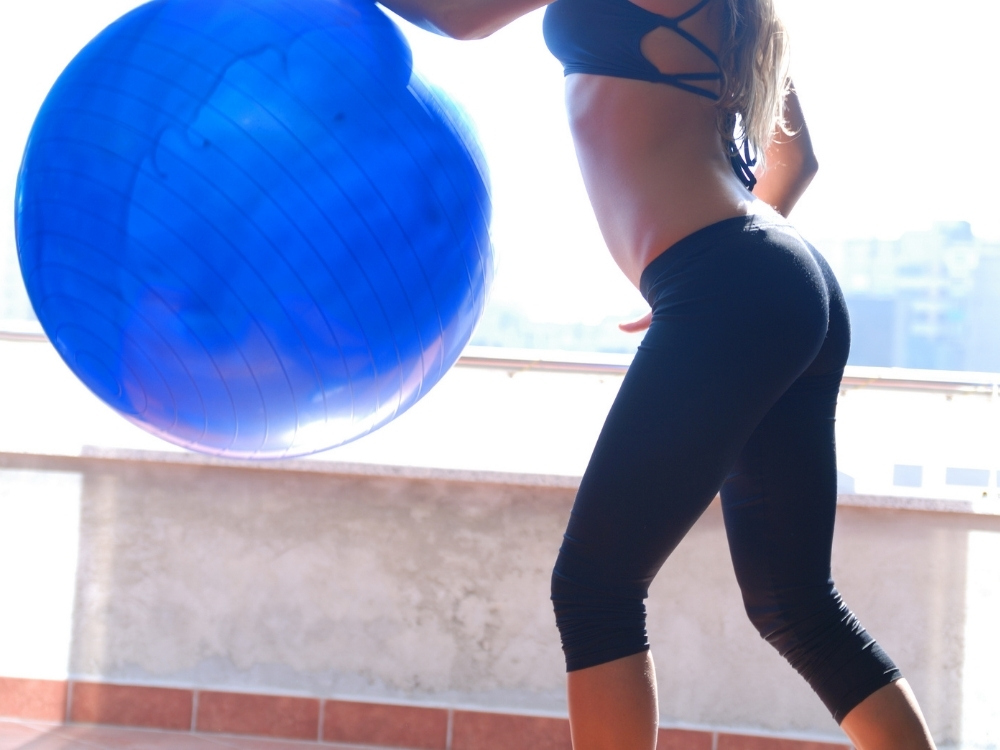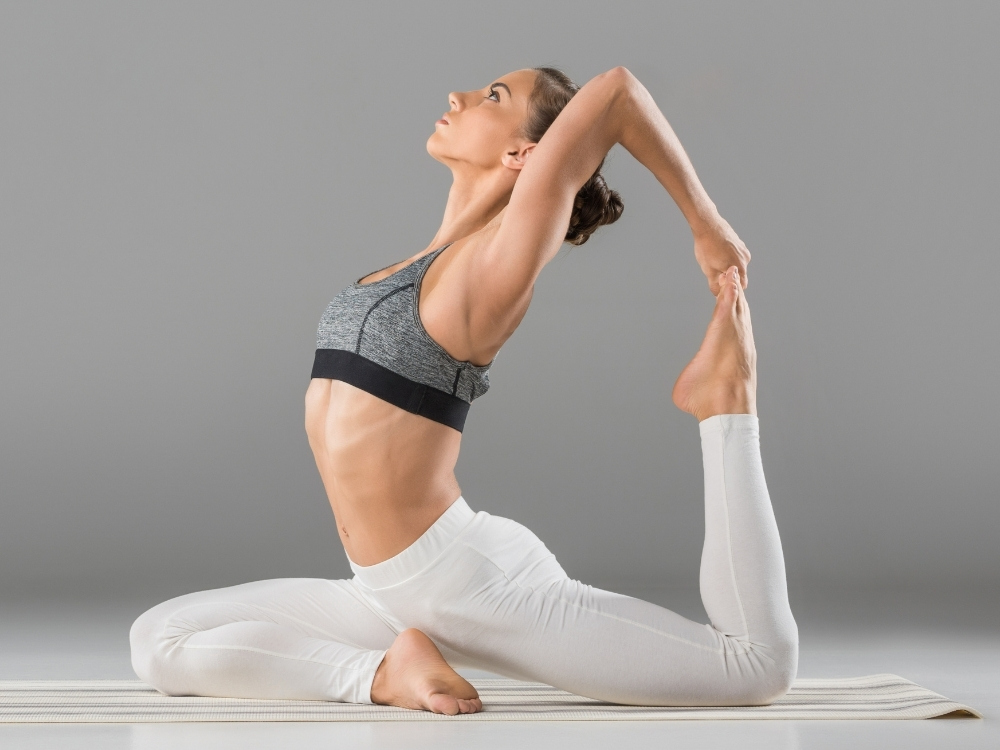Every physical exercise requires different equipment. Clothing is a big part of it and choosing the right one can really improve your experience.
Pilates is no exception here. Some people think that they can wear anything, but that is a mistake. There are a few requirements your clothes have to fulfil.
Pilates activewear needs to be stretchy enough not to restrict your movement, it should be relatively tight-fitting so that it doesn’t slip in inverted poses. Materials must be light, breathable, and fast drying. Shoes are not required but you could really benefit from non-slip socks!
When you are doing certain exercises, proper clothes will enable your instructor to see if your alignment is good. It is an important step to reduce injuries and maximize efficiency.
Besides, you will feel much better in proper clothes, and it can even boost up your confidence!
Here I will tell you more about what to wear to Pilates and why.
What is Pilates Activewear? [Meaning]
Pilates activewear is sport clothes that is made for Pilates practice. Designers created it to make your exercise experience pleasant, safe, and comfortable. Of course, there is not a lot of difference between yoga, Pilates and some other low-impact exercise, so you can combine the same items for both practices.
Materials do not retain sweat, they can dry quickly, and the clothes is made in a way so that you can easily make full motions with your joints.
Baggy clothes should be avoided as it can slip or get in a way of proper alignment, especially on the machines.
Besides, if you are a beginner, or you are experienced but you are learning new exercises, your instructor will observe you and guide you in order to teach you how to perform certain exercises properly. Improper clothes can get in the way of that. It may sound crazy, but bad clothes can even lead to injuries.
Avoid cotton and materials that retain water (sweat). Clothes like that will become wet and heavy. Besides that, you should always avoid extremely tight and too small clothes that can restrict your movement.
Pilates clothes is mostly plain, without pockets, buttons, zippers, laces, or hoods. All of those are very impractical and uncomfortable when you are practicing, especially when lying down.
What are Pilates Activewear Essentials for Pilates Workout?
What to wear to Pilates depends on your preferences and time of year of course. It also depends on your local studio rules. Here are the most important items:
Form-fitting bottoms – forget sweatpants or shorts. Choose tights that are soft and comfortable. They will enable full range of motion and enable your instructor to see your alignment. Shorts may be worn, but if you sweat a lot, you will leave sweat stains on your mat, and it is both unhygienic and a slipping hazard.
Anti-slip socks – if you are practicing at home, or you are carrying your own mat into the studio, you may even exercise barefoot if you prefer! Of course, some studios do not allow this. However, there are socks that should be worn for both hygienic and safety reasons. Anti-slip socks have rubber patches on soles, and they prevents slipping, especially during some advanced exercises. Beginners can also benefit as they will feel safe and comfortable to move.
Shirt – form fitting, but not extremely tight, shirt is the way to go. Depending on temperatures it can be with long or short sleeves. It has to fulfil the same purpose as the bottoms.
Underwear – ladies need a sports bra. Regular one has straps that are not comfortable and can slip from your shoulder. Sports bra will keep everything in place, even in inverted poses. As this is a low impact exercise, choose the ones that are more comfortable and have less support. You do not need as much tightness as while running or practicing any kind of high-impact activities.
When it comes to bottom part of your underwear, both ladies and gentlemen should choose comfortable standard underwear. Ladies should avoid thongs, while gentlemen should avoid baggy underwear and wear tight fitting one, especially if practicing in shorts.

What are the Best Pilates Activewear Clothing Manufacturers?
There are dozens of Pilates activewear clothing manufacturers, and they all differ in design, price, and availability in certain areas. Luckily, many of them have online stores so that is not really an issue.
Of course, your budget will play a big role in choosing manufacturers but don’t worry, some big brands do not have a lot better clothes than some less famous and cheaper ones. Good clothes can be found in all price ranges.
There is one tip that I have to give you, and that is to avoid brands that make only Pilates activewear. Those are usually overpriced, and the quality is questionable. Some reputable and decent priced brands have excellent activewear for all kinds of activities, including Pilates.
Some of the most famous ones are Nike, Puma, Reebok and Adidas. They have a variety of tights, shirts, and even underwear for low impact activities.
Under Armour is also very popular. If you want something that is extremely well made and also environmentally friendly, check out Patagonia tights and shirts. Unfortunately, their prices are a bit higher.
What are the Types of Material Used to Make Pilates Activewear?
Pilates wear, as any other sportswear, is designed to fulfil a purpose. It is called activewear for a reason, and the materials are not the same as those used in fashion or business clothing. Besides being comfortable and breathable, materials have to be able to endure a lot of stretching and rough use.
These materials are usually a mix of different artificial components, although sometimes a small percentage of natural materials can be added, like cotton.
Among various materials, there are three that are frequently used for Pilates activewear, and those are Spandex/Lycra/Elastane, which are basically the same. Polyester, Polyamide, and Nylon are used in certain activewear, but when it comes to Pilates, they are not so frequent.
All of these materials have certain pros and cons. I will not bore you with technical details, except for stretchability, especially when it comes to leggings. This feature is a must as you will be working a lot on stretching, so you want your clothes to last through that specific use.
These synthetic fibers do not retain a lot of liquid and are extremely fast drying. When you buy Spandex/Lycra/ Elastane garments for Pilates, make sure to wash it in cold water, with liquid detergent, but without fabric softener! Softeners leave residue on top of the fabric and in the long run it will destroy its breathability and ability to stretch which means that the fibers will break.
Luckily, these materials are not very expensive, so you can find decently priced activewear!

Conclusion
If you are practicing Pilates (one, two or three times a week), you should get a set of Pilates activewear. Proper clothing will enable full range of motion, it will enable your instructor to see your posture, and it will be comfortable for you to exercise in such clothes.
Besides tights and shirts, use suitable underwear, and think about anti-slip socks. Sweatpants and baggy clothes should be avoided, especially if practicing on a reformer.
Even with a smaller budget, you can definitely find suitable activewear and enjoy your Pilates practice!

